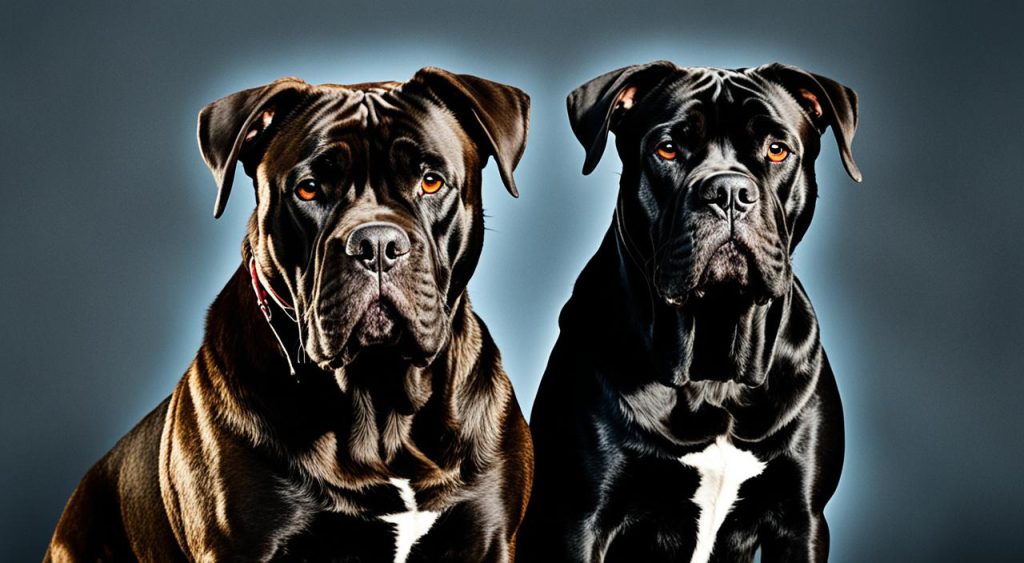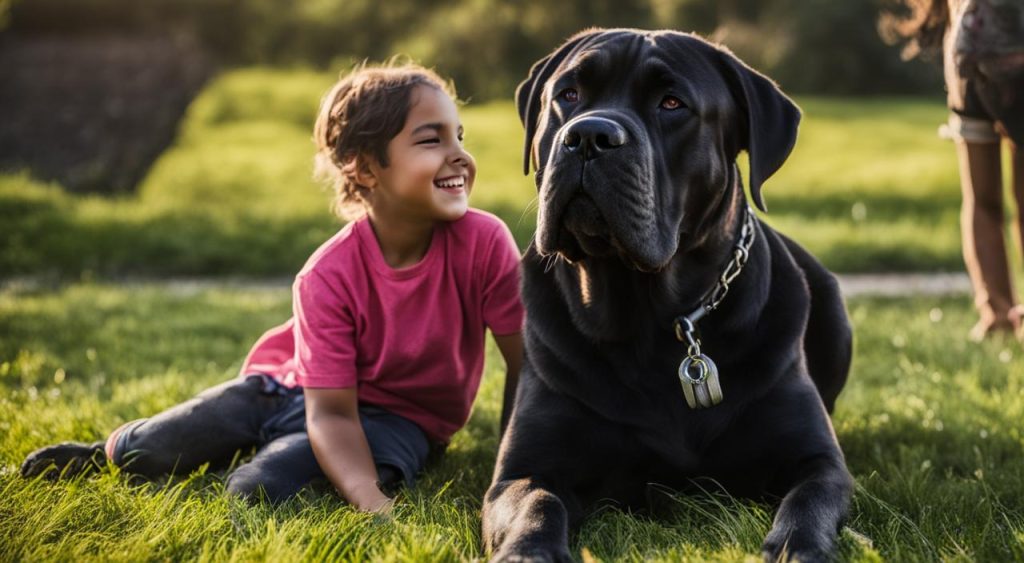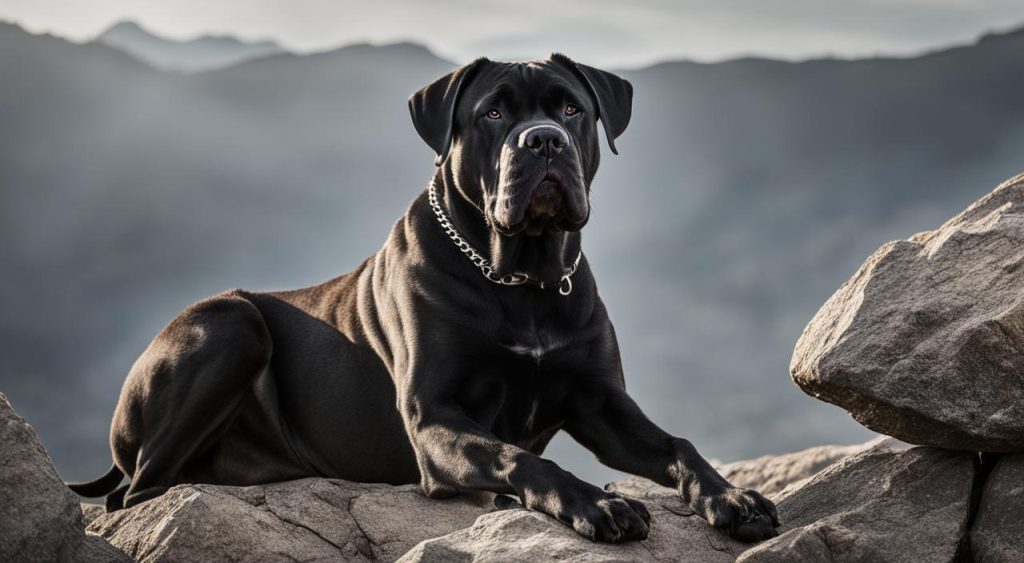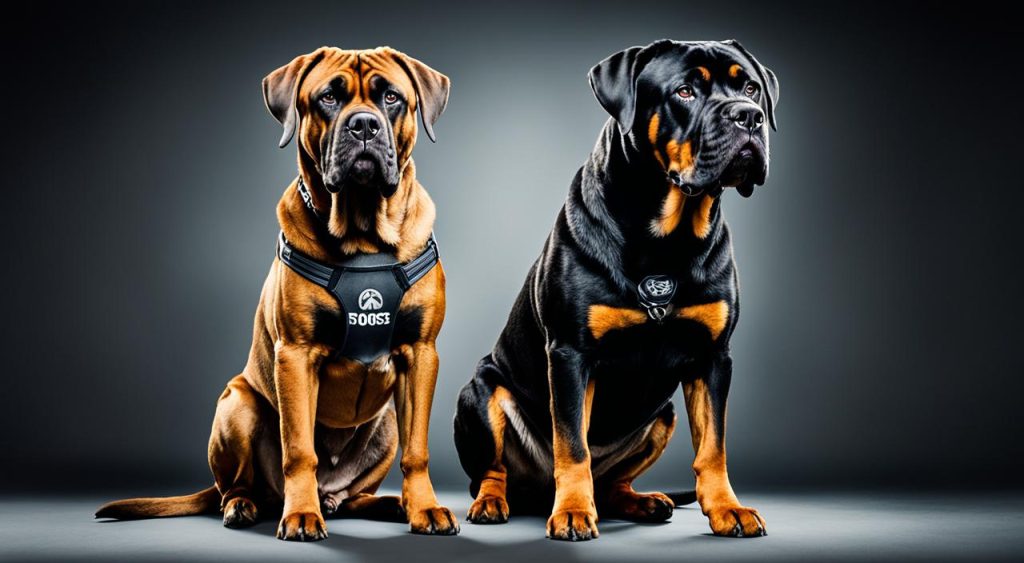The Cane Corso breed has a fascinating ancestry that can be traced back to ancient Italy. It is believed to be descended from the Canis Pugnax, an old Roman Molossian breed that served as an auxiliary warrior in the Roman Wars. This ancient breed is the direct ancestor of both the Cane Corso and the Neapolitan Mastiff.
The Cane Corso name itself comes from the Italian words “Cane,” meaning dog, and “Cohors,” meaning guardian or protector. Throughout history, this versatile breed has excelled in various roles, from being skilled hunting and catch-dogs to loyal protectors of property and livestock.
In the 1970s, a small group of enthusiasts worked tirelessly to revive the Cane Corso breed. Their efforts paid off, as the breed eventually made its way to America in the 1980s. Today, the Cane Corso is recognized by kennel clubs worldwide, including the Italian Kennel Club (ENCI), the World Kennel Club (FCI), and the American Kennel Club (AKC).
Key Takeaways:
- The Cane Corso breed traces its origins back to ancient Italy.
- It is descended from the Canis Pugnax, an old Roman Molossian breed.
- The Cane Corso’s name translates to “dog” and “guardian or protector” in Italian.
- The breed’s history is rooted in its versatility and adaptability.
- A small group of enthusiasts revived the breed in the 1970s.
- The Cane Corso is recognized by kennel clubs worldwide, including the AKC.
The Unique Traits of the Cane Corso
The Cane Corso has a distinct temperament and set of characteristics that make it a unique breed. It is not recommended for first-time dog owners due to its dominant personality and natural protective instincts. Corsos are naturally intuitive and suspicious of change, making strong, consistent leadership and early socialization crucial.
Despite their imposing appearance, Corsos are known to be gentle and tolerant with children and show great devotion to their families. They are intelligent and eager to please, making them relatively easy to train. However, they can suffer from separation anxiety if not properly socialized. Corsos crave attention and love and are often described as “velcro-dogs” due to their strong attachment to their owners.
The Physical Characteristics of the Cane Corso
The Cane Corso is a large dog of the molossoid type and is closely related to the Neapolitan Mastiff. Males typically stand 62-70 cm (24-28 inches) at the withers and weigh 45-50 kg (100-110 lb), while females are slightly smaller, standing 58-66 cm (23-26 inches) and weighing 40-45 kg (90-100 lb).
The breed has a well-muscled physique, but is less bulky compared to other mastiff breeds. The head is large, with a well-defined stop, and the eyes are oval-shaped and set well apart.
The Cane Corso has a short, dense, and lustrous coat that can come in various colors, including black, shades of grey (lead-grey, light grey, or slate-grey), fawn (dark fawn, light fawn, or stag red), and dark wheaten (“fromentino”).
Minor white markings on the chest, feet, or nose are tolerated.
Conclusion
The Cane Corso breed, with its rich history and unique traits, is a fascinating companion for those seeking a loyal and devoted dog. With its ancient Italian origins, the Cane Corso is known for its versatility as a working dog and its strong protective instincts.
Owning a Cane Corso requires a high level of commitment, as these dogs thrive with strong, firm leadership, moderate exercise, and plenty of love and attention. While it may not be the ideal choice for first-time dog owners, understanding the breed’s needs and providing proper training and socialization can result in a rewarding and fulfilling companionship.
With its noble appearance and gentle nature, the Cane Corso has the potential to become one of the best dogs you have ever owned. Whether you are drawn to its history, its protective instincts, or simply its striking presence, the Cane Corso is a breed that offers both companionship and loyalty, making it a wonderful choice for dog enthusiasts and experienced owners.





